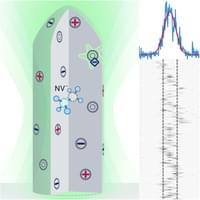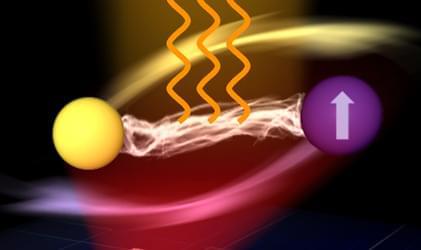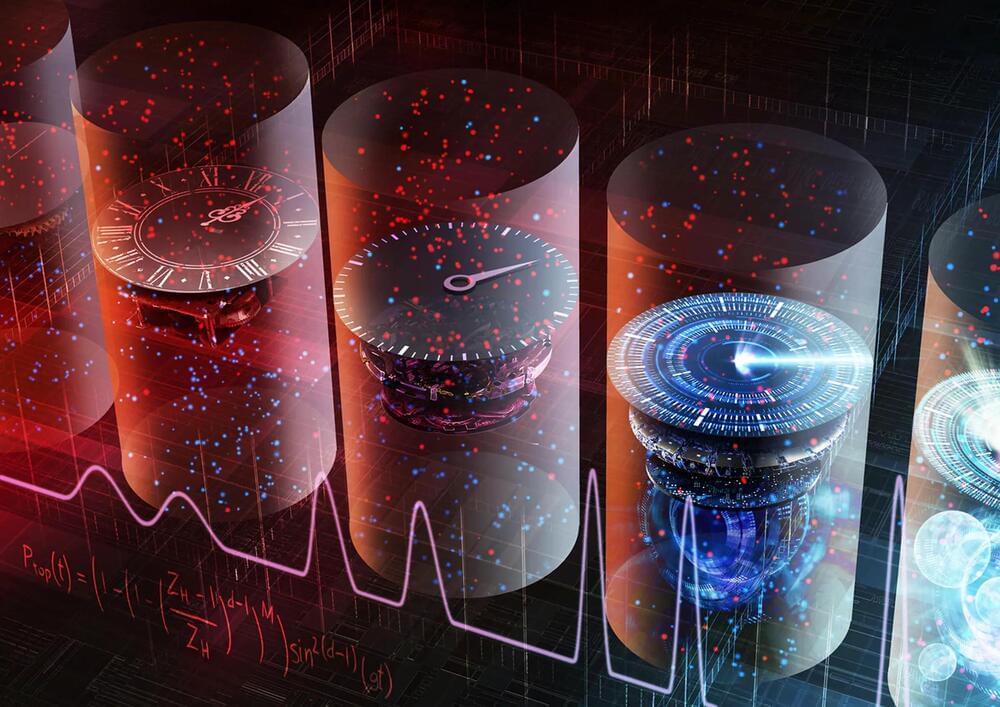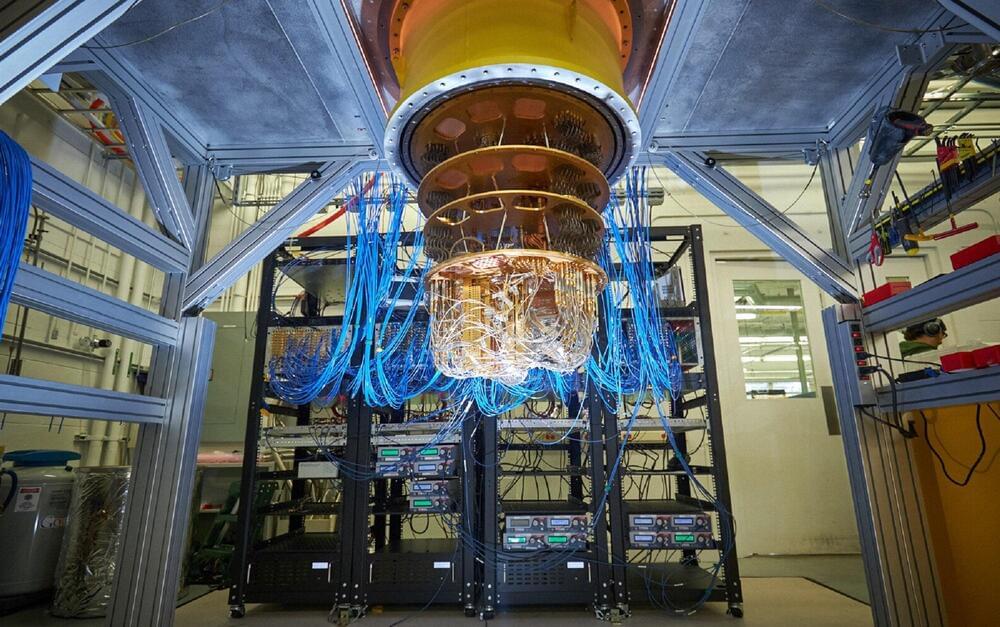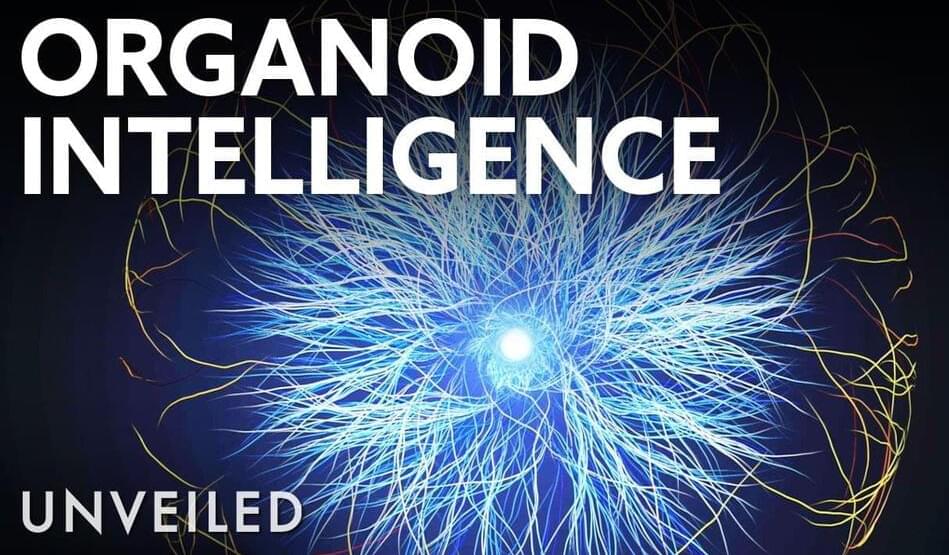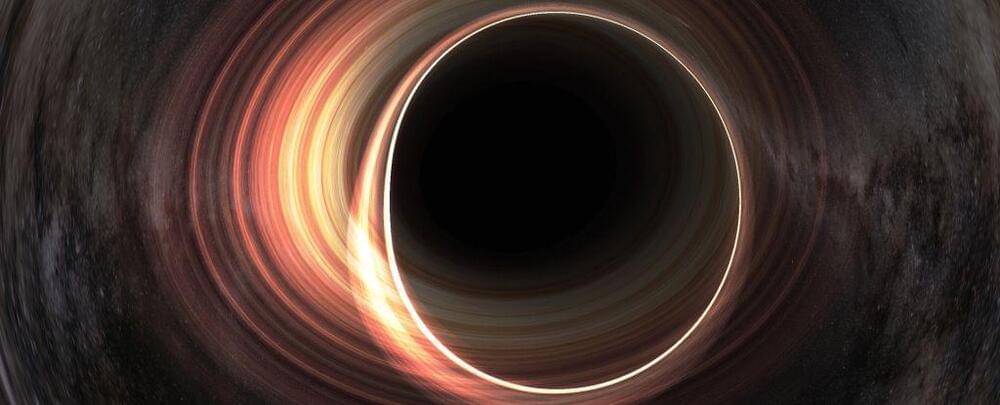An analysis and improvement of the spectral properties of nitrogen-vacancy defects in diamond nanostructures paves the way for efficient entanglement generation necessary for many quantum information applications.
Category: quantum physics – Page 316
Magnetic spin excitations can combine with photons to produce exotic particles that emit laser-like microwaves.
One of the challenges for building systems for quantum computing and communications has been the lack of laser-like microwave sources that produce sufficient power but don’t require extreme cooling. Now a research team has demonstrated a new room-temperature technique for making coherent microwave radiation—the kind that comes from a laser [1]. The device exploits the interaction of a magnetic material with electromagnetic fields. The researchers expect that the work will lead to microwave sources that can be built into chips employed in future quantum devices.
The devices that store quantum bits for quantum computers often require microwave signals to input and retrieve data, so lasers operating at microwave frequencies (masers)—and other sources of coherent microwaves—could be very useful. But even though masers were invented before lasers, most maser technologies work only at ultracold temperatures. A 2018 design works at room temperature but doesn’t produce very much power [2].
Has AI advanced too far and too fast? Does it represent an out-of-control threat to humanity? Some credible observers believe AI may have reached a tipping point, and that if research on the technology continues unchecked, AI could spin out of control and become dangerous.
This article explores how Google responded to ChatGPT by using foundation models and generative AI to create innovative products and improve its existing offerings. It also examines Google’s use of Safe AI when creating new products.
“Moreover, in all of these tasks, GPT-4’s performance is strikingly close to human-level performance, and often vastly surpasses prior models such as ChatGPT. Given the breadth and depth of GPT-4’s capabilities, we believe that it could reasonably be viewed as an early (yet still incomplete) version of an artificial general intelligence (AGI) system.”
We are indeed living in “interesting” times.
A quantum computational solution for engineering materials. Researchers at Argonne explore the possibility of solving the electronic structures of complex molecules using a quantum computer. If you know the atoms that compose a particular molecule or solid material, the interactions between those atoms can be determined computationally, by solving quantum mechanical equations — at least, if the molecule is small and simple. However, solving these equations, critical for fields from materials engineering to drug design, requires a prohibitively long computational time for complex molecules and materials.
Retrocausality, a mind-blowing quantum concept, proposes that future events impact the past. Challenging time’s traditional flow and exploring interconnected temporal relationships. Can the universe communicate with its past-self?
0:00 What is Retrocausality?
00:55 The Layers of the Universe.
02:17 The Universe Is Not Real.
04:32 The Role of Quantum Entanglement.
08:02 Does Time Travel Explain the Mysteries of the Universe?
#retrocausality #timetravel #quantummechanics.
Interested in what I do? Sign up to my Newsletter.
Erasing data perfectly and attaining the lowest possible temperature may appear unrelated, but they share a strong connection. Researchers at TU Wien have discovered a quantum formulation for the third law of thermodynamics.
The temperature of absolute zero.
Absolute zero is the theoretical lowest temperature on the thermodynamic temperature scale. At this temperature, all atoms of an object are at rest and the object does not emit or absorb energy. The internationally agreed-upon value for this temperature is −273.15 °C (−459.67 °F; 0.00 K).
Simulating a wormhole has long been a goal in quantum physics. But current quantum computers don’t have enough qubits to teleport particles.
Is THIS how we’ll all live forever?? Join us, and find out!
Subscribe ► https://wmojo.com/unveiled-subscribe.
In this video, Unveiled takes a closer look at a new rival to AI and quantum computing… OI Organoid Intelligence! Using tiny versions of our own brains, scientists are powering a new digital revolution! But could it ALSO mean that, one day, we all live forever??
This is Unveiled, giving you incredible answers to extraordinary questions!
A synthetic analog of a black hole could tell us a thing or two about an elusive radiation theoretically emitted by the real thing.
Using a chain of atoms in single-file to simulate the event horizon of a black hole, a team of physicists observed the equivalent of what we call Hawking radiation – particles born from disturbances in the quantum fluctuations caused by the black hole’s break in spacetime.
This, they say, could help resolve the tension between two currently irreconcilable frameworks for describing the Universe: the general theory of relativity, which describes the behavior of gravity as a continuous field known as spacetime; and quantum mechanics, which describes the behavior of discrete particles using the mathematics of probability.
Within the larger, “true” universe, ours could have branched off due to a random quantum fluctuation.
